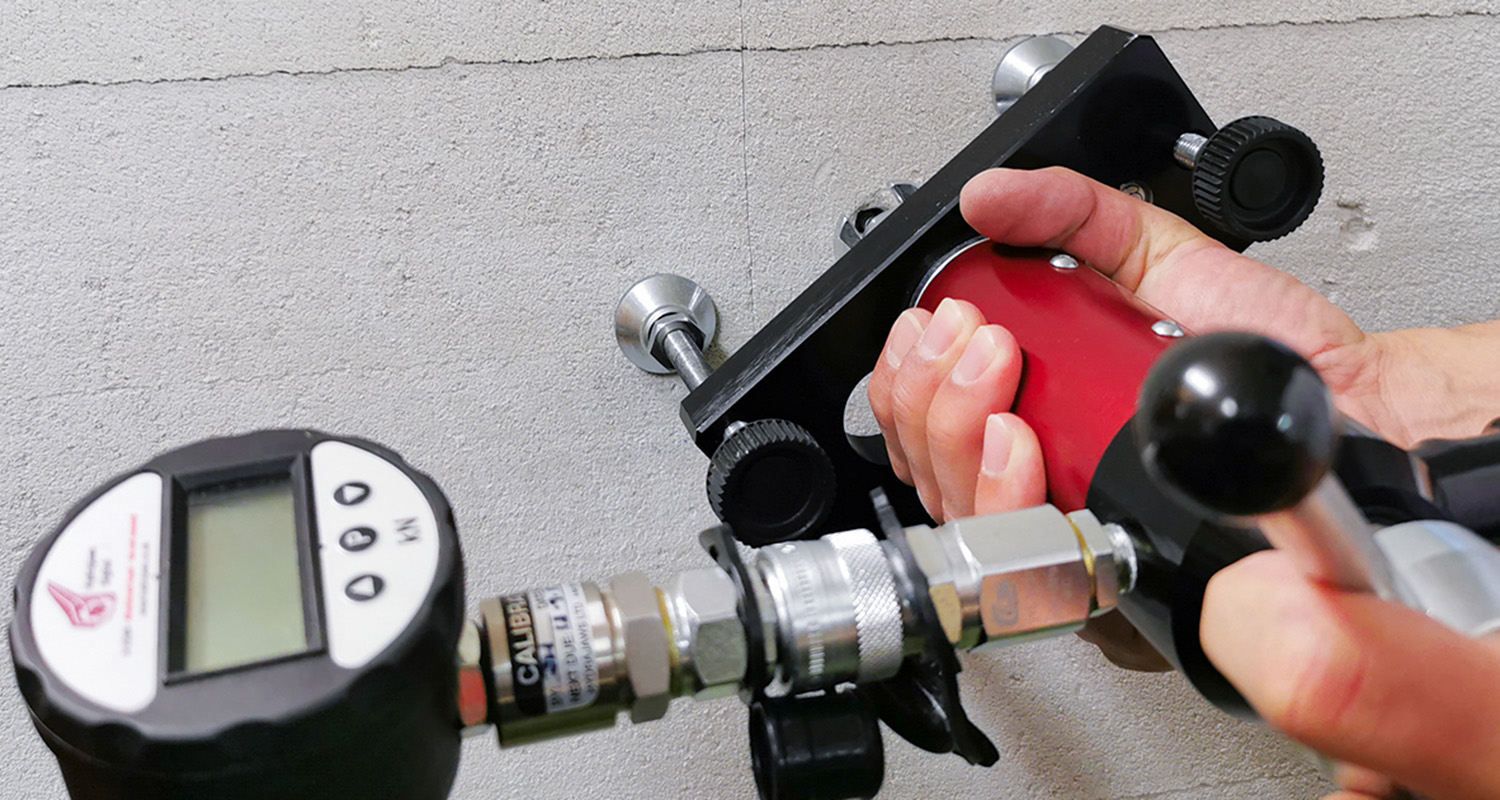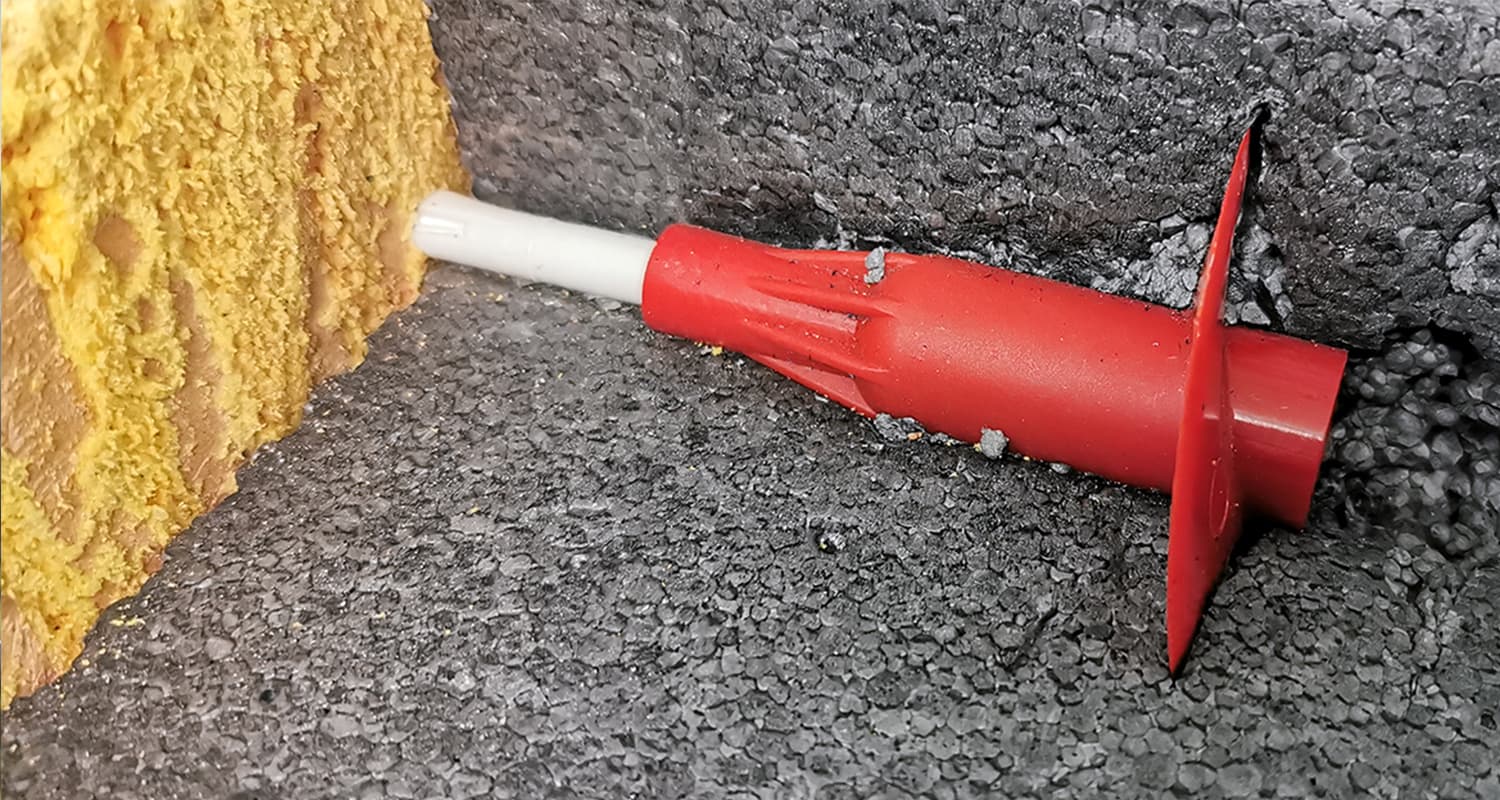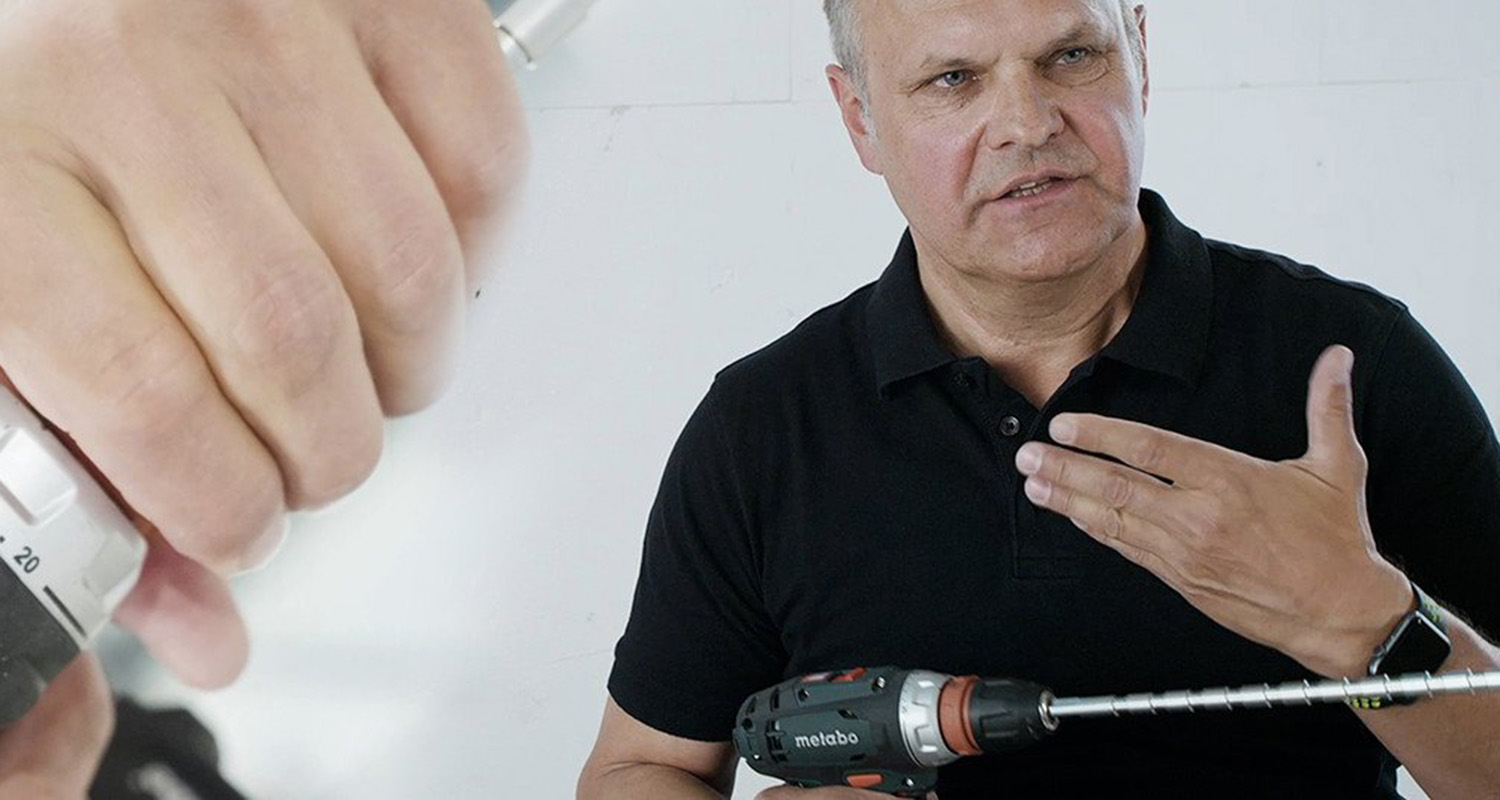Mechanical fastening systems are one of three options to secure a thermal insulation system to a façade. Owing to their high load-bearing capacity, they are considered safe ETICS fasteners that absorb wind loads and the weight of a system by means of certified steel screws with a high bending moment and the holding forces in the substrate.
There are three options to install an external thermal insulation composite system on a façade. The insulation boards can be glued, glued and dowelled, or mechanically fastened. Mechanical fastening involves the securing of insulation boards to a façade without the use of adhesives. This, almost always, comprises the use of certified plastic anchors with zinc-coated steel screws. The fastening is purely mechanical because external loads, such as system weight and wind suction, are directed into the substrate solely via the screw-in anchors (see article: Mechanical fastening systems expand range of possible ETICS applications).
Absorbing wind and system loads
Wind pressure and wind suction are highly region-specific. That’s why, wind loads are divided into various country-specific wind zones. In Germany, the maximum permissible wind suction for ETIC systems must not exceed 2.2 kN/m2 or an equivalent wind speed of 214 km/h. In Central Europe, for example, the most powerful European windstorms that were measured in the relevant zones reached maximum speeds of below 200 km/h. In the range of permissible values, a high tolerance level was factored in. In zones where the wind load is exceeded, it is not permitted to install external thermal insulation composite systems in buildings.
An ETIC system’s own weight varies from insulation board type and thickness between 10 and 50 kg per m2. The dead load is removed by shear forces through the anchors and the bending moment of the steel screw, respectively. The higher the weight and thickness of the system, the more bending moment the anchors must absorb.
Approvals give assurance
Owing to the potentially high loads caused by wind and system weight, trusted fastening systems are essential. That’s why, anchors used for purely mechanical fastening differ from regular ETICS anchors in several points. On the one hand, certified steel screws are mandatory in order to meet the permissible bending moment according to ETAG 020. The determining values include a higher screw diameter and the deeper, effective anchoring of the screw in the substrate. Naturally, this way, higher tensile loads and shear forces can be absorbed as compared to customary anchors.
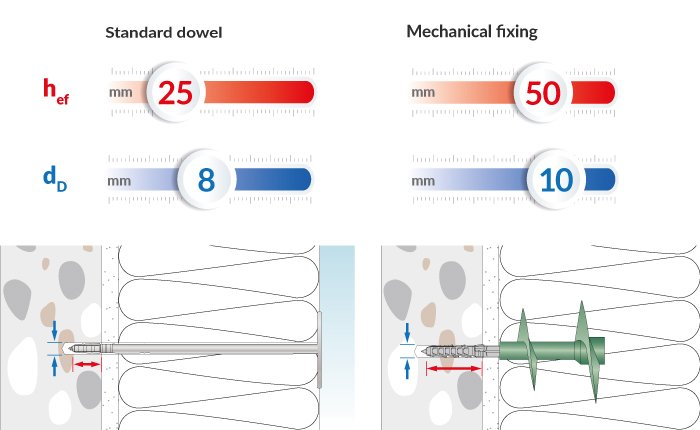
To obtain market approval, fasteners have to undergo a two-fold test. On the one hand, the fastening system requires an anchor approval to determine the anchor load in the substrate. The European Technical Assessment regulates the load-bearing capacity of the plastic anchor as a multi-fastening system for anchoring in concrete and masonry. The so-called pull-out value indicates whether the connection between anchor and substrate is sufficient. This value takes into account that façade anchoring systems are redundant and non-load bearing. This means that in the event of larger displacements or failure of a single anchor, the load can be transferred to the adjacent anchors without significantly impairing the load-bearing capacity. Since several anchors give mutual support to each other, experts call this a multi-fastening system.
Only after an anchor has been approved it can demonstrate its ability to secure an insulation system to a façade. The system approval regulates which construction materials can be used together as a system. The adhesion between fastening system and insulation material must be tested in the installed state by means of so-called combination trials. In accredited testing institutes, the ETIC system is subjected both to transverse tensile strength and pull-through strength, during which the maximum system deformations are measured and determined. The transverse tensile strength is a vertical force, reflecting the shear force that is generated by the system’s dead load. The higher the permissible bending moment of the steel screw, the more shear force the anchor can absorb. The pull-through strength, in turn, is a horizontal force, simulating the tensile load generated by the wind suction. The larger the dowel plate, the better the pull-through values.
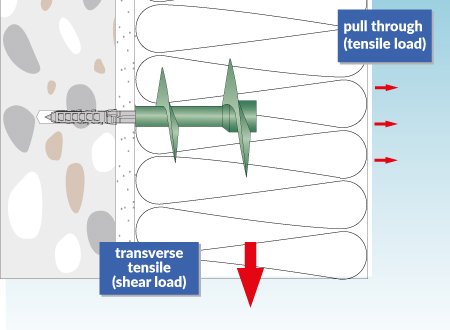
The high permissible bending moment and the higher anchoring values in the masonry show why the screw diameter in purely mechanical ETICS anchors usually differs from that of regular anchors. The two additional millimetres alone, which are the result of a 10-mm anchor as opposed to an 8-mm version, lead to a significant increase in the values. Consequently, the number of anchors per m2 decreases.
Increased safety
The above-mentioned values for anchor and system approvals are determined in the lab and will, in practice, vary therefrom. That’s why, manufacturing tolerances for construction materials or inappropriate machining are accounted for by safety factors. A safety factor of 3, for example, means that the component has a three-fold safety reserve against failure.
In order to establish the characteristic load-bearing capacity of a single anchor in the anchor approval, the investigators determine a 5-% fractile value from all measured pull-out values. This means that at least 95% of all determined single values are greater than the reported value for the permissible load-bearing capacity per substrate. Additionally, the load-bearing capacity is decreased by a partial safety factor which varies according to the substrate. The partial safety factor for e.g. concrete is 1.8. The nearly halved value which results therefrom, is then listed as load class.
In the system approval, the screw-in anchor’s load-bearing capacity is determined in the strictly specified insulation material by means of combination trials (shear forces and pull-through load). A partial safety factor between 3 and 5 sufficiently safeguards the theoretical lab values.
In addition to the ascribed safeties in the approval of anchors and systems, for the sake of safety, further mechanisms come into play: Self-monitoring by the manufacturer, external monitoring of the manufacturing process, and external monitoring of the raw material quality by accredited material testing facilities provide a consistently high level of quality. In countries such as Germany regular monitoring is demanded and checked by the German Institute for Construction Technology (DIBt).
Conclusion: Mechanical fastening systems for insulation façades withstand tensile loads caused by wind and transverse tension by the system’s dead load. This, in addition to the multi-fastening of anchors, is made possible by the higher anchoring depth as well as the quality and larger screw diameter. Partial safety factors and continuous quality control make an important contribution to consistent stability.

